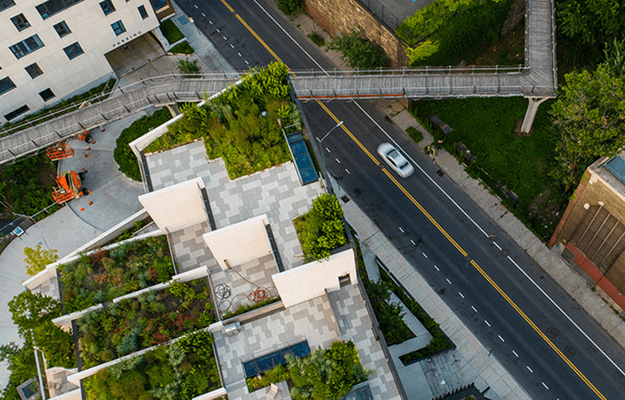
When Do New Parks Drive Gentrification?
- Title:
- When Do New Parks Drive Gentrification?
- Author:
-
Alessandro Rigolon and Jeremy Németh
- Source:
- Publication Date:
-
2019
Developing new green spaces, parks, bike lanes, and other environmental infrastructure in historically disinvested neighborhoods can increase housing demand nearby, leading to higher rents and home prices—potentially sparking displacement or gentrification. Some scholars suggest that this phenomenon, green gentrification, is best countered by a “just green enough” approach to park development, and they assert that creating small-scale parks near affordable housing, rather than large parks, can reduce the chances of green gentrification. This study quantitatively examines whether the location (distance from downtown) and size and function of new parks correlated with gentrification in nearby census tracts.
The researchers analyzed the likelihood of gentrification near new parks built in gentrification-eligible census tracts between 2000 and 2016 in a sample of 10 US cities. The sample cities represent all major US geographic regions as well as significant variations in population size and racial and ethnic demographics. In addition to variables that measured park location, size, and function, the researchers included variables correlated with gentrification, such as the share of people of color, housing vacancy, presence of historic housing, proximity to downtown, access to rail transit, provision of publicly subsidized housing, and socioeconomic status. To classify a census tract as “gentrified,” the researchers used the following criteria:
- increases in median household income
- increases in the share of people with a bachelor’s degree
- either a rise in median gross rent or median housing value greater than that of their city in the same period
Key findings
- The study did not find empirical support for the park-size component of the “just green enough” claim and instead asserts that park location and park function are the strongest triggers for gentrification.
- Between 2008 and 2016, the presence of a new park close to downtown increased the odds of gentrification by 91 percent and the presence of greenway parks with a transportation function increased the odds of gentrification by 145 percent.
- From 2008 to 2016, new greenway parks with an active transportation function sparked gentrification more often than all other parks types.
- New parks located near downtown are likely to trigger gentrification regardless of size and function.
Policy implications
- Future plans to build greenway parks with a transportation function should deeply engage affordable housing nonprofits and dedicate specific funds for housing.
- Planners should incorporate the potential effects of the location and function of new parks into existing gentrification “early warning system” models.
- As the study did not find empirical evidence that large parks foster gentrification more than small parks, planners and policymakers should work to protect affordable housing in low-income communities of color and simultaneously address inequities in accessible park space by adding substantial new green space.
Photo by TinnaPong/Shutterstock


